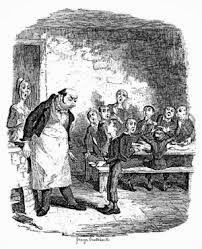I'm in the midst of getting a long-overdue remodeling of my kitchen done! For a woman who's never been much of a cook or baker, this entire project has been a source of excitement, a great deal of careful thought, and some bemusement. I’ve been in many kitchens during my life, listening to other women complaining about the things they don’t like about their own, and have had plenty of time to decide what I want and don’t want in my own. My mother hated the big kitchen in our New Street house; she felt she should be borrowing my roller skates to speed things up instead of trudging from one part to another getting meals in that big room—until, a few years later, she was struggling in a very small kitchen into which the four of us barely fit. She succeeded in getting that one enlarged in her own remodeling (an epic tale in itself deserving a separate post), and I've been musing that hers took place during her 25th year of being married; coincidentally, so has mine.
I’m going to post about that later, when I can include pictures of the finished project.
Today is October 10th, and it is World Porridge Day. No, really!
Did you eat oatmeal porridge when you were little? Do you eat it now?
Granny and I did, when she wasn’t having shredded wheat. As a child, I ate it as a matter of course when she visited us, and/or in the winter. She was a purist, combining the oats, salt, and water in traditional Scottish fashion—although by then she was without her spurtle, making do with the biggest of the wooden spoons Grandpop had carved as a gift for Mother when she got married.
 |
| Oak & Cherry Spurtle |
I’ve been wanting one for some time. The Ligonier Highland Games this year were memorable for unusual, steady, hard, daylong rain; my voluminous skirts wicked up at least three small puddles almost as soon as I got out of the car. After my storytelling at the carousel, I went over to the vendors’ area by the Big Field. Normally, the farthest edge past the last tents is a bit boggy, even on a hot, dry day. Vendors are set up in two rows of tents, one with its back to the field, the other in front of a copse of trees, down a slight grade. Intending to look at that row first, I took one step off the gravel…and sank up to my ankles in oozing mud! Chickening out, I headed upslope to Scottish Gourmet USA, and emerged after an interesting conversation about kitchens and blackboards with my very own spurtle, hand-carved by a man in Maine. I chose an oak and cherry one, and when I got home, put it in the Hickory, PA salt-glazed crock with my other prized wooden implements, next to my sprottle.
 |
| Sprottle |
When I mentioned I was going to retire a year ago last August, several people asked me if I had any plans. Other than being John’s caregiver, and continuing to tell stories, play my Celtic harp, blog, and write, my plans were vague. Somewhat to my surprise, over the last 14 months, my list of projects has gotten longer, taking some unexpected turns, including the latest.
I want to bake.
As I mentioned, I’m not much of a cook or a baker. It amused me somewhat that as soon as my old oven died the week before last Christmas that this yen to bake became so pronounced. Ah, the attraction of the unattainable! That has solidified into a persistent desire to master baking various Scottish pastries, beginning with fern cakes—another post, as well!
And there are so many things one can bake with oatmeal….
Having a spurtle of my own meant, naturally, that I was going to look into these subjects of oatmeal and porridge more than I ever had before, and I found out some interesting things. Dr. Samuel Johnson famously defined oats in his Dictionary (1755) as: “A grain, which in England is generally given to horses, but in Scotland supports the people.”
He meant to be derisive, but was accurate; porridge of every kind has supported most peoples throughout the world for millennia. While we in the West tend to think of it as being made with oatmeal, porridges are made of many different grains all over the world, from the rice-based congee of Southeastern Asia, to the semolina and wheat kinds eaten in ancient Rome (frumenty, with fruit or meat added) and Finland to the cornmeal mush eaten by American pioneers (Laura Ingalls Wilder’s family ate it) to the potato-and-barley kinds eaten in Norway and Russia to varieties made with rye, quinoa, millet and sorghum in other places. Whatever grain is its base, it can be flavored with almost anything from fruit (berries, pieces or a spoonful of jam), nuts, spices, coconut, chocolate, butter, meat, fish, seafood, mushrooms, vegetables, milk or water, bread, eggs…the list goes on!
Did you ever play a clapping game, chanting or singing:
Pease porridge hot, pease porridge cold,
Pease porridge in the pot, nine days old;
Some like it hot, some like it cold,
Some like it in the pot, nine days old….
although it was unlikely to last that long! Yup, that’s another kind! Kind of greenish, I always thought it must be. I imagine that some porridges flavored with chocolate or cocoa, like the Tsampurado of the Phillippines, or the Champurrado drink of Mexico, must be brownish. The first time I had Italian polenta, fixed by my friend Betsy’s mom Elaine Ogden, it was bright yellow, and I suppose other kinds are various tints too. I’ve never had Shuco, which is a Salvadoran drink made with black, blue, or purple corn flour, ground pumpkin seeds, chili sauce, and some red cooked kidney beans, traditionally drunk out of a hollowed-out gourd in early morning, but doesn’t that sound colorful?
I did write drink—porridges can range from almost being as thick as a dumpling to gruel. The latter is defined as a "thin, watery porridge," not that manufacturers like Horlicks have wanted to mention the “g” term for the last 175 years. Ever since Dickens had Oliver Twist (1838) ask for more, please, in the workhouse, it’s been synonymous with parsimony and poverty…and that’s why that most miserly of all literary misers, Ebenezer Scrooge, was making some when Jacob Marley clomped in. Yet, indicative of gruel's place as a diet staple in many cultures, earlier in that century Jane Austen had her middle-class characters, as well as the poor, eating it for their health (Mr. Woodbridge, in Emma), and so did Emily Brontë. More recently, in one of his Belgariad fantasy trilogy, David Eddings has two characters of opposite opinions of it—Errand happily calls it porridge, but Silk despises it as gruel. If Frodo and Sam had not had the Elvish lembas, they would have sustained themselves with gruel—and I bet that’s one reason why the orcs were so quarrelsome in The Lord of the Rings!
My research led me to the website for the Porridge Lady, who had a post about the World Golden Sprottle Porridge Championship in Scotland, held last week. They are teaming up this year with Mary’s Meals, a non-profit that, for example, helps 600,000 children in Malawi get a mugful of Likuni Phala, a maize-based porridge. They have to go to school to get it, and for most of them, it’s the only nutritious meal a day they get. The children have to take care of their own mugs; some carry them on a string around their necks so they don’t lose them. If you go to those websites, you can easily donate.
Oatmeal is well-known to be nutritious and filling, but wouldn’t you like the way even a small donation to such a worthy cause would help fill up another part of you?












































